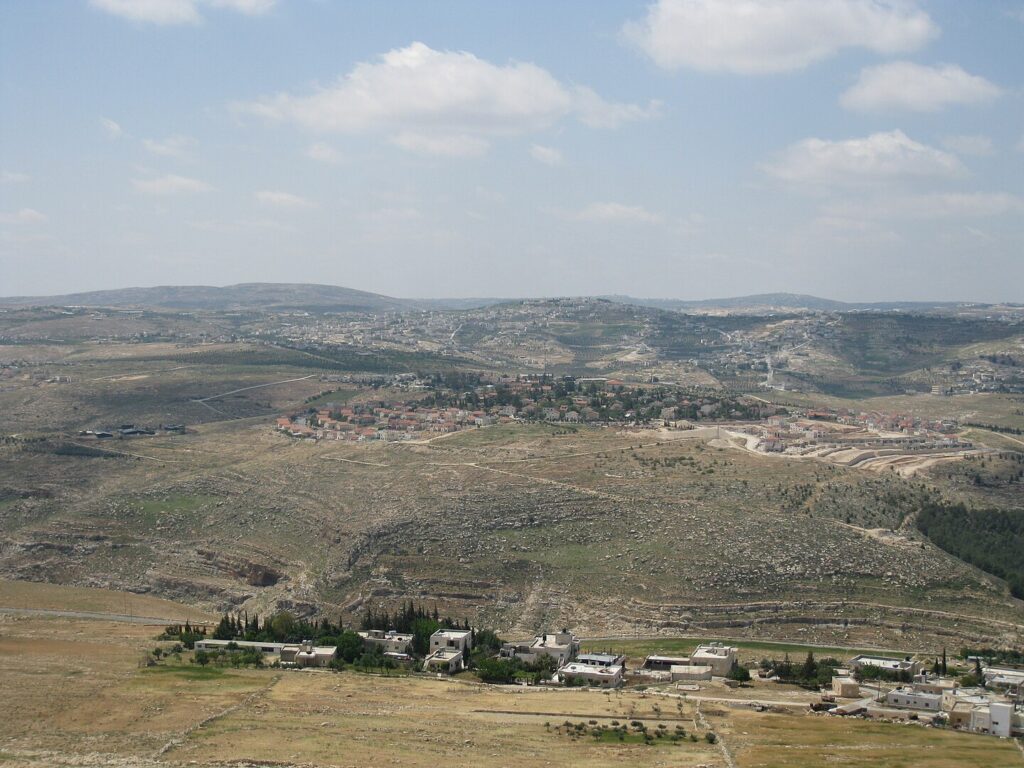Location
Khirbet Teqoa is an archaeological site situated in the West Bank, roughly 8 kilometers south of Bethlehem.It lies in the Judean Hills, offering panoramic views of the surrounding countryside.The modern Palestinian village of Tuqu’ is found adjacent to the archaeological site.

Identification
Khirbet Teqoa is widely identified with the ancient biblical town of Tekoa, mentioned in various historical sources, including the Hebrew Bible. The Arabic name “Tuqu'” is derived from the pronunciation of “Tekoa” in Arabic.The identification is supported by the site’s location, archaeological findings, and historical references.
History
- Iron Age: Tekoa’s prominence dates back to the Iron Age, referenced in the Hebrew Bible as a Judean town.
- It was renowned for its skilled archers and warriors, mentioned by the prophet Amos as a symbol of suffering during the Assyrian invasion.
- Archaeological evidence suggests continuous habitation throughout the Iron Age, with remnants of houses, fortifications, and storage facilities unearthed.
- Roman and Byzantine Eras: The site remained inhabited during these periods, evidenced by ruins of houses, cisterns, and a large square fort.
- Trade flourished during this time, with Tekoa potentially serving as a stopover point on the route between Jerusalem and Hebron.
- Crusader Period: The Crusaders referred to the site as Thecua and constructed a castle there.
- The castle ruins still stand today, offering a glimpse into the Crusader presence in the region.
- Modern Era: The modern Palestinian village of Tuqu’ thrives near the archaeological site, preserving the historical connection to Tekoa.
Biblical Context
- The Hebrew Bible mentions Tekoa in various contexts, including:
- As the hometown of the prophet Amos (Amos 1:1)
- As a city fortified by Rehoboam, king of Judah (2 Chronicles 11:6)
- As a place of mourning and lamentations (Jeremiah 6:1)
- These references paint a picture of Tekoa as a significant town in ancient Judea, with religious, military, and agricultural importance.
Excavations and Findings:
Khirbet Teqoa, has been excavated by Martin Heicksen (1968), John J. Davis (1970), and Sayf al-Din Haddad (1981)
- Archaeological work at Khirbet Teqoa has been ongoing since the early 20th century, with significant discoveries made:
- Iron Age: Unearthed structures include houses, fortifications, storage facilities, and ritual buildings.
- Roman and Byzantine Eras: Findings encompass houses, cisterns, pottery fragments, and agricultural tools.
- Crusader Period: The castle ruins stand as a testament to the Crusader presence.
Sources
Stern, Ephraim-New Encyclopedia of Archaeological Excavations in the Holy Land 2-Israel Exploration Society (1993)


